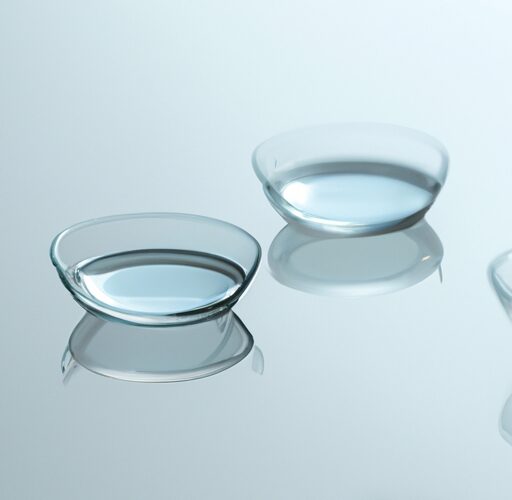The Pros and Cons of Using Silver Nanoparticles for Contact Lens Disinfection
As a contact lens wearer, you know the importance of keeping your lenses clean and disinfected. But with so many products on the market, it can be difficult to choose the best option.
The Pros
Silver nanoparticles are a popular option for contact lens disinfection. Here are some of the benefits:
1. Highly effective
Silver nanoparticles have been shown to be highly effective at disinfecting contact lenses. They can kill a wide range of bacteria and viruses, including those that cause eye infections.
2. Long-lasting
Unlike some other disinfection methods, silver nanoparticles can provide long-lasting protection. This means that your lenses will stay clean and free from harmful bacteria and viruses for longer.
3. Easy to use
Most silver nanoparticle disinfection systems are easy to use. You simply add the solution to your lenses and let it sit for the recommended amount of time. This makes it a great option for those with busy lifestyles.
The Cons
While there are many benefits to using silver nanoparticles for contact lens disinfection, there are also some drawbacks to consider. Here are a few:
1. Expensive
Compared to other disinfection methods, silver nanoparticles can be quite expensive. This can be a barrier for those on a tight budget.
2. Limited availability
Not all eye care providers carry silver nanoparticle disinfection systems. This can make it difficult for some contact lens wearers to access this type of disinfection method.
3. Unknown long-term effects
While silver nanoparticles have been shown to be effective at disinfecting contact lenses, we still don’t know what the long-term effects of using them may be. Some studies have suggested that repeated exposure to silver nanoparticles can have negative health effects, but more research is needed.
Conclusion
Overall, silver nanoparticles can be a highly effective and convenient option for contact lens disinfection. However, they may not be the best choice for everyone. If you’re considering using silver nanoparticles, make sure you talk to your eye care provider about the pros and cons to determine if it’s the right choice for you.
“What are some alternative methods for contact lens disinfection besides using silver nanoparticles?”
1. Hydrogen peroxide solution: This is a great alternative disinfectant for those with sensitive eyes or contact lens materials that aren’t compatible with multipurpose solution. Hydrogen peroxide solution requires a special disinfecting case and takes at least six hours to work.
2. UV-C light disinfection: Another option is to use a UV-C light device to kill bacteria and viruses. UV-C light is used in some handheld wands or lamps to disinfect contact lenses and other small objects.
3. Heat disinfection: Heat disinfection is an option for soft lenses. This method involves soaking lenses in sterile saline solution and then placing them in a container filled with water to be heated. Temperature is held at 158°F (70°C) for 10-15 minutes.
4. Enzymatic cleaners: For those who have a buildup of protein on their lenses, enzymatic cleaners can help. These products break down the proteins that can lead to cloudy vision and irritation over time.
5. Rub and rinse method: Some people choose to clean their contact lenses by manually rubbing and rinsing them with sterile saline solution. This is generally recommended as a supplement to a disinfection method and not as a stand-alone solution.

